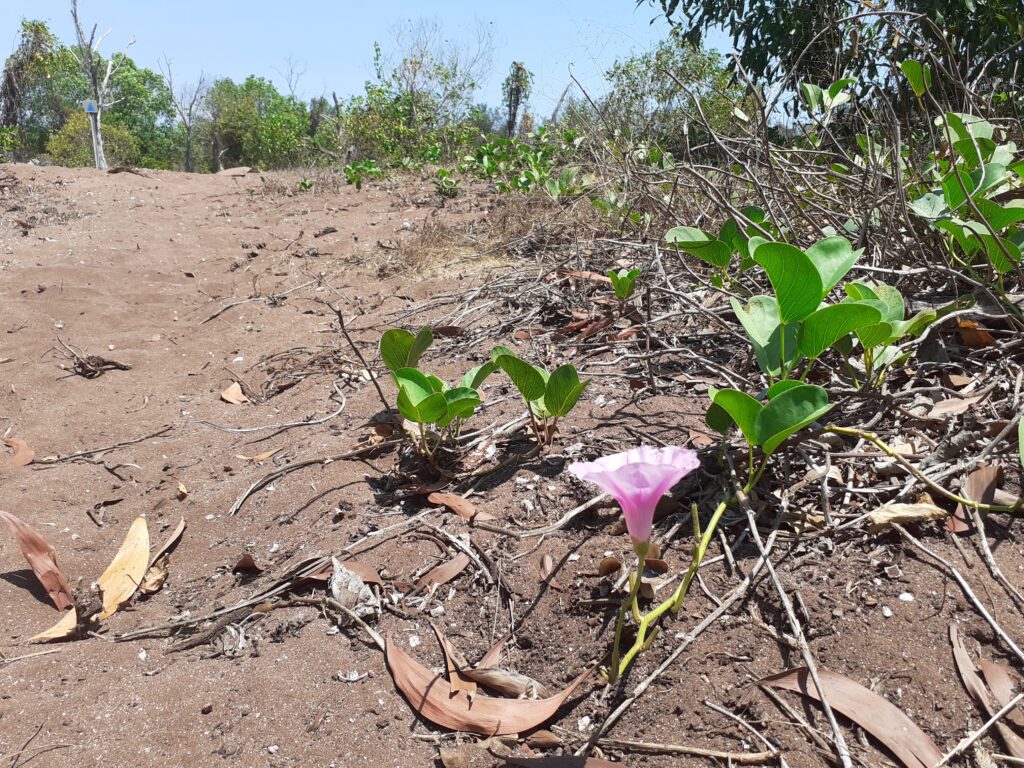We have reached the Coburg Peninsula in the far north of the Northern Territories. We hoped to visit an aboriginal village on Croker Island but when we wrote to the town office asking if we could come they wrote back telling us they had no tourist infrastructure, no transport, lots of crocodiles and that we needed a government permit to land. We took that as a no. We anchored just off the island and they were not lying about the crocodiles. “Karl the five meter crocodile” hauled himself on to the beach just after we arrived and his younger cousin swam slowly past Artemis hoping we were going to take a swim.

The next day we waited for the tide to turn and used the tidal current to push us through the Bowen Strait. It was a great high speed sail that took us to the other end of the island where we anchored and were amazed that we had a tiny bit of Internet. Crazy. Beyond the end of nowhere I could upload files for my colleagues and Heidi could send anniversary congratulations to her daughter.
The next day we sailed once again down wind. A few dolphins came over to play with Artemis, a passing turtle watched us sail by and waved a flipper and an olive sea snake raised its head to watch our progress but decided against chasing us. As sea snakes are each poisonous enough to kill you twenty times over with each bite, we were relieved that he decided against hitching a ride.
We are now anchored off the Black point Ranger Station and took the dinghy to shore. We were heading towards the buildings when a voice out of the bush said “Hello!”. The voice belonged to an army captain in camouflage gear. He left the trees to chat and ask if we had seen any suspicious activity out at sea and if we did to let them know.

At the station we met the three friendly rangers who live out here all year with their wives and children. We asked them typical cruiser questions about their resupply (the post plane each week), power (diesel generators) and water (a bore hole). Two of the rangers were aboriginals and we heard about their grandfather’s and the wealth of animal and plant local lore that they had – back in the day. One of them listed about ten things that could kill us out here and then sent us off to follow a circular path through the bush. We guessed that it looks bad on their resume if too many tourists die so we were not unduly worried. It is the end of the dry season so everything is very dry and waiting for the rains but we found one flower that added a color other than brown and red. We also found a strychnine tree with bright red berries that are, the name is the clue, very poisonous. The aboriginals used them to make poison for hunting and later the Europeans used them as rat poison.

After our walk we viewed the informative cultural center that explained about the peninsula’s history and included a canoe in which an Indonesian was blown out to sea and spent a month drifting to Australia with a broken motor. A four wheel bus arrived and disgorged an elderly tourist party who had just driven seven hours off road to get here. They were interested in the toilets, our journey and the local history in that order. Fifteen minutes later they were gone to catch a boat to a luxury resort across the bay and peace returned.
At the dinghy we washed red sand off us in the sea. On Artemis we washed more red sand off with salt water and finally we washed red sand off our clothes and us with fresh water. Finally we know why they call it the red continent.

